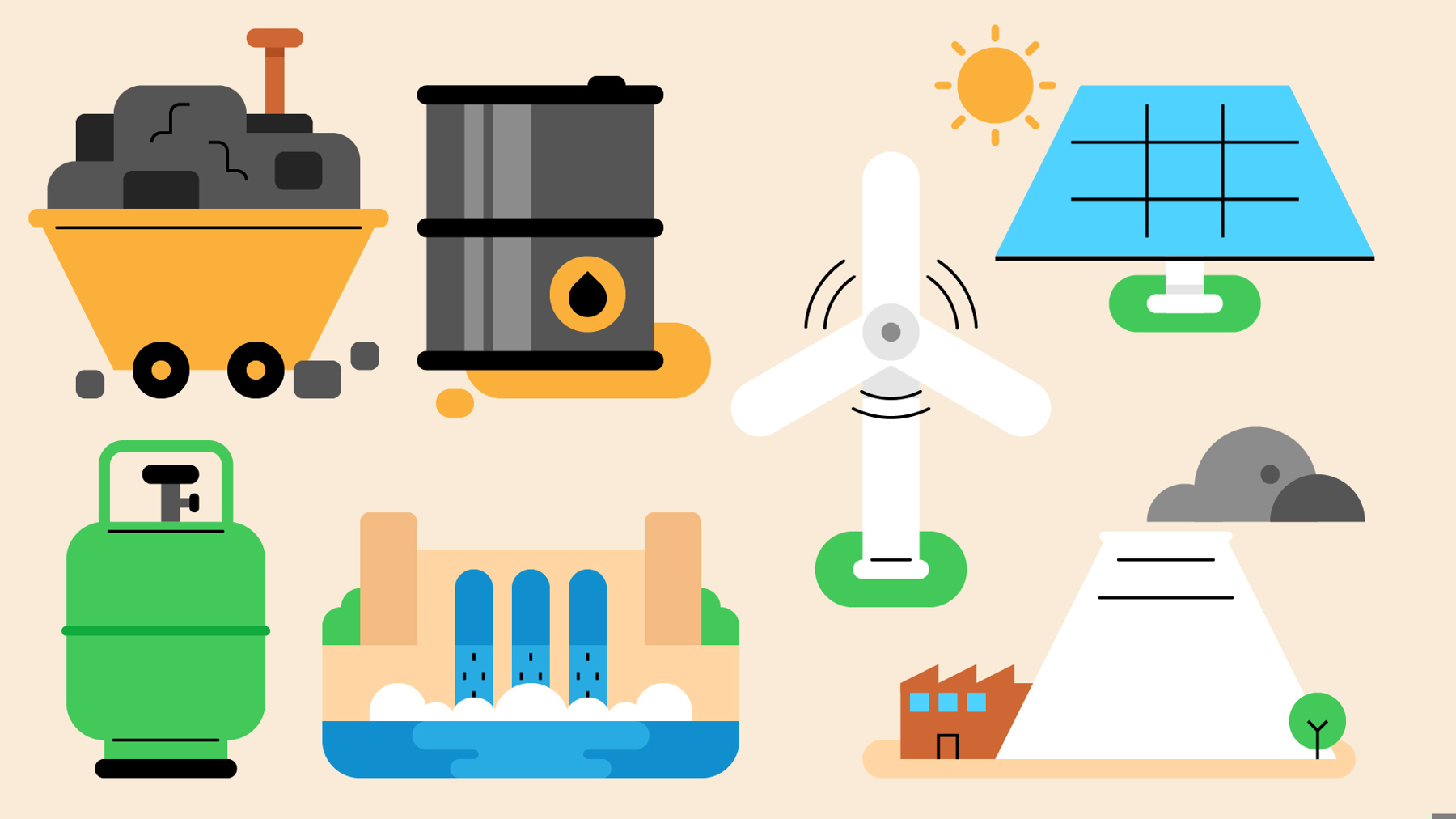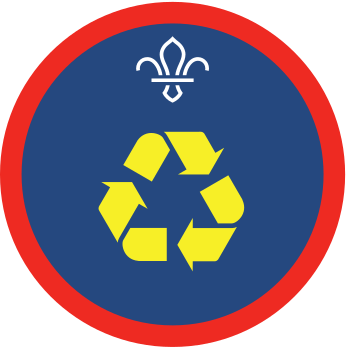
Frame the wind
You’ll need
- Rulers
- Scissors
- Paper cups
- Drawing pins
- Clean, empty plastic bottles (two litres)
- Thick cardboard
- Pencils with erasers on the ends

Before you begin
- Print and cut out the images in ‘Energy sources’. Make sure there are multiple copies of each picture.
- Hide the images around your meeting place.
Find the energy sources
- Everyone should get into small groups and hunt for the pictures of energy sources that have been hidden.
- Everyone should talk about the energy sources they’ve found.
-
- How do they work, and are they renewable or non-renewable?
- Which type of energy is better?
- Use the energy information sheet to give definitions and more examples.

Build your own wind turbine
- Split into small teams. Each team should work together to build a model of a wind turbine, using the diagram to help.
- Cut out two identical pieces of cardboard, each one inch wide and seven inches long.
- Cross the strips of cardboard at right angles and staple them together in the middle.
- Staple a paper cup to both ends of each strip, taking note of the direction they need to face as shown in the wind turbine diagram. Mark the outside of one of the cups with a cross or dot: you’ll use this to count the rotations so make sure you can see it.
- Carefully put a drawing pin through the centre of the cardboard cross and push it into the eraser on the end of a pencil. Gently turn the cross to check that it spins.
- Place the pencil into an empty plastic bottle, with the pointed end down. The turbine should stand up on its own.
- Every team should take their turbines to various areas and test the wind speed for 60 seconds, counting the number of rotations each time. Challenge the teams to find the most and least windy areas.
- Everyone should come back together to discuss the advantages and disadvantages of wind power.
We've included some ‘Energy information’ below for ideas.
Net zero
Net zero refers to the balance between the amount of greenhouse gas emissions produced and the amount of greenhouse gas emissions removed from the atmosphere.
We reach net zero when the amount of greenhouse gas emissions we add to the atmosphere is no more than the amount taken away.
We can achieve net zero by reducing the amount of greenhouse gas emissions we produce to be as close to zero as possible. The greenhouse gas emissions that remain may be absorbed through natural carbon sinks, such as through trees in forests and via new technologies, resulting in no carbon emissions being leftover or added to the atmosphere and net zero being reached.
Renewable energy
This is energy created from natural resources that are sustainable, meaning that what gets used can be replaced. Renewable energy can also harness the natural energy in things like the strength of a blowing wind. Some common examples include:
- Biomass. Burning natural materials like plants to get energy from heat.
- Hydropower. Using the power of water and waves.
- Geothermal. Channelling the heat from inside the earth.
- Wind. Turning huge turbine blades with the power of the wind.
- Solar. Using the heat from the sun to generate electricity.
Non-renewable energy
This is energy created from things that cannot be replaced by nature as quickly as they are used. They are also called fossil fuels, because they are made from the fossilised prehistoric remains of plants and animals that have been under the earth’s surface for millions of years. One day, we will run out of non-renewable energy. Some common examples include:
- Coal. Prehistoric wood that has been buried under the earth. It is burned to create heat.
- Oil. A liquid mostly made from prehistoric ocean creatures and plants, which is turned into petrol to fuel cars.
- Natural gas. Formed when prehistoric plants and animals are exposed to intense heat and pressure. It is burned to create heat.
Wind power: advantages and disadvantages
Advantages
- Wind power is a clean, non-polluting way to generate electricity. It is far more eco-friendly than fossil fuels because it doesn’t involve burning.
- The wind is free and it blows often, providing lots of energy.
- The wind is captured and turned into electricity using a turbine. These can be installed in remote locations, like the middle of the sea, where other power stations couldn’t be built.
Disadvantages
- Wind turbines are expensive to build.
- Wind turbines can be dangerous to flying animals like birds and bats, which can get trapped in the rotating blades.
- Some wind turbines generate a lot of noise.
- Wind turbines have to be built in suitable locations. Sometimes these are very peaceful and quiet spots that people don’t want covered in turbines.
- The wind can be unpredictable, and sometimes there might be not enough to produce the energy that we need.
Reflection
This activity helped you to take an active role in society. You’ve learnt about renewable energy, especially wind power, which could help us to clean up our planet. How does a wind turbine create energy from something that we can’t see? What are the advantages of wind power? Can you think of some disadvantages?
This activity also required you to use your practical skills to build a model that spins like a wind turbine. What did your team do to make it work? What skills did you use?
Safety
All activities must be safely managed. You must complete a thorough risk assessment and take appropriate steps to reduce risk. Use the safety checklist to help you plan and risk assess your activity. Always get approval for the activity, and have suitable supervision and an InTouch process.
- Scissors
Supervise young people appropriately when they’re using scissors. Store all sharp objects securely, out of the reach of young people.
- Sharp objects
Teach young people how to use sharp objects safely. Supervise them appropriately throughout. Store all sharp objects securely, out of the reach of young people.
- Try making one wind turbine model with the whole group, discussing it at every stage.
- Challenge everyone to take their wind turbines home and test them elsewhere to find the windiest spot in the local area.
Balance the capability of the teams so they support each other and cooperate, and no one is left behind in participation.
All Scout activities should be inclusive and accessible.
If you enjoyed this activity, check out our other activities in partnership with the Gas Distribution Network.

